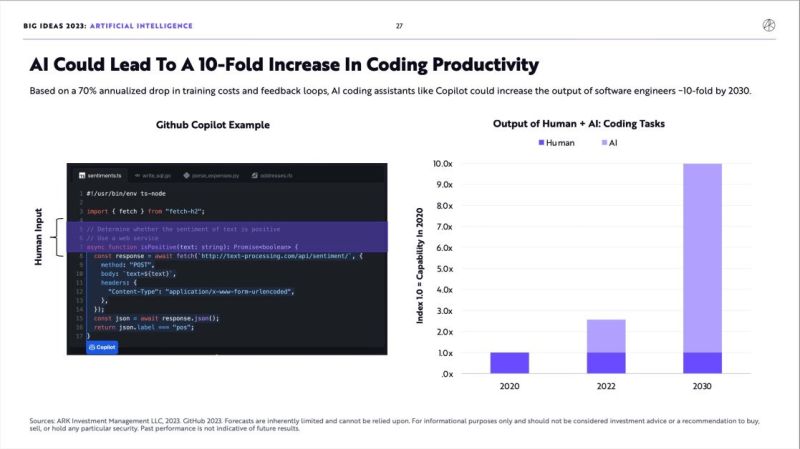Software was eating the world, now AI is eating software.
In 2011, Marc Andreessen famously said that “software is eating the world.” He was referring to the way that software was increasingly becoming the foundation of our economy and society; and how it is automating multiple industries and making them more efficient.
Now, AI has started to automate swathes of software engineering tasks. For example, over 40% of code in Github is already AI generated.
Think coding, testing, debugging – all increasingly devoured by AI programs like Github Copilot, ChatGPT, Replit, Intellicode and many others.
Unsettling? Maybe. But change often is.
What does this mean? It means that software engineerings will have to master new skills – mastering AI collaboration, strategic AI application, and continuous learning.
We are entering a new era where AI is starting to eat software. Thanks to AI is being used to automate a wide range of software engineering tasks, from writing code to testing and debugging.
We will also need to be able to think more strategically about how to use AI to improve our software in terms of effectiveness, quality, and security.
What does this mean for the future of software?
The future of software is going to be shaped by AI. AI is going to make software more powerful, more efficient, and more accessible. It’s going to enable us to build software that we never thought possible before.
The next step is for us to embrace AI and to start using it to improve our software. We need to be open to new ideas and new ways of working. We need to be willing to learn and to adapt.
If we do that, then the future of software is going to be so bright that we will need sunglasses.
#generativeai #copilot #softwaredevelopment #productivity

